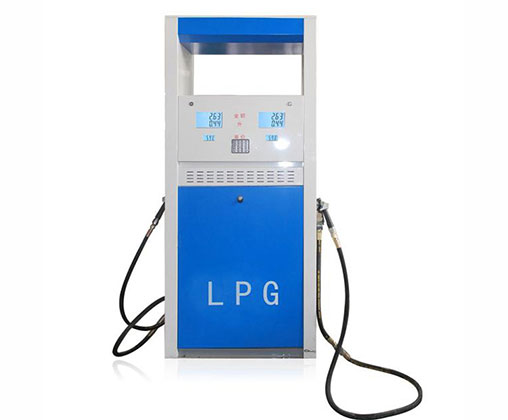LPG Dispensers
LPG Dispensers: A Comprehensive Overview of Technology and Benefits
Introduction
Liquefied Petroleum Gas (LPG) has emerged as a crucial alternative fuel source, offering a viable substitute for traditional gasoline and diesel across a spectrum of applications. As global energy consumption continues its upward trajectory, exacerbating the energy crisis and driving up the cost of conventional fuels, LPG's significance is becoming increasingly pronounced. The escalating prices of gasoline and diesel, the cornerstones of transportation, are placing significant financial strain on vehicle owners, while concurrently, environmental concerns are intensifying, with cities worldwide grappling with the consequences of air pollution and stringent emission regulations.
In response to these interwoven challenges – escalating fuel costs, environmental degradation, and the need for sustainable solutions – many countries have actively promoted LPG as a cleaner-burning, economically advantageous fuel for vehicles. This has led to the establishment of extensive networks of LPG filling stations, contributing to both economic and environmental gains. At the heart of this infrastructure lies the LPG dispenser, a critical component that facilitates the efficient and precise dispensing of LPG for vehicles and cylinders. These dispensers play an essential role in the widespread adoption and utilization of LPG.

Types of LPG Dispensers
LPG dispensers can be broadly categorized into two distinct types: cylinder filling dispensers and vehicle filling dispensers. Each type is designed to meet specific needs, while adhering to stringent safety and accuracy standards.
Cylinder Filling Dispensers: These are specifically engineered for refilling LPG cylinders. Their advantages include:
Ease of Operation and Rapid Filling: Designed for user-friendliness and speedy cylinder refills, optimizing operational efficiency.
Clear Digital Displays: Equipped with super-bright digital tube displays for clear, real-time visibility of filling data.
Robust Construction: Engineered with shockproof, impact-resistant components and resilience against electromagnetic interference, ensuring reliability in diverse environments.
Effortless Calibration: Designed for easy and precise balancing and calibration, ensuring accuracy.
Integrated Weighing Capabilities: Capable of setting total filling weight and automatic filling peeling without the need for external weighing scales, streamlining the refilling process.
Vehicle Filling Dispensers: These dispensers are designed for refueling vehicles powered by LPG and feature a more complex system, which comprises:
Constituent Parts: Vehicle filling dispensers typically include a robust LPG liquid pipeline, a separate gas pipeline, various valves, a precision flow meter, a temperature sensor, sophisticated electronic controls, a gas-liquid separator, and a liquid return nozzle. These components work in concert to deliver accurate and safe dispensing.
Operational Principle: LPG is transferred from a storage tank to the dispenser via a pump. A separator then effectively isolates any vapor from the liquid LPG. The separated gas returns to the storage tank while the liquid LPG is directed to the flow meter for precise measurement. Subsequently, the measured liquid is delivered to the vehicle through a hose and a snap valve.
Key Functions and Features of Modern LPG Dispensers
Modern LPG dispensers are characterized by advanced functionalities designed to enhance performance, safety, and operational efficiency:
Automated Control: Computer-controlled systems ensure the automatic display of dispensed volumes, as well as the financial cost of the fuel, providing crucial transactional information.
Preset and Fixed Quantity Functionality: Allows for precise dispensing based on preset amounts or fixed quantities, enhancing flexibility and convenience for both the operator and customer.
Automatic Stop Function: Ensures a safe and efficient filling process by automatically halting the dispensing process when the vehicle tank is full.
Enhanced Safety Features: Time-out safeguards automatically halt dispensing if there is no fuel flow for a specified period. These features can also be programmed for flow rate limitation for additional protection.
Data Integrity: Features include long-term data storage after power failures, with the ability to retrieve and replay data. This feature ensures operational accountability and data integrity.
Transaction History: Capable of replaying the most recent 50 transactions, for verification purposes.
Comprehensive Tracking: Provides essential data, including shift-based cumulative values, and total cumulative values.
Advanced Diagnostics: Equipped with automatic fault detection that displays fault codes, facilitating quick and efficient maintenance and troubleshooting.
Interconnectivity: Features communications capabilities with other station equipment and back-office systems; options of communication protocols are often available.
Optional Back-Office Integration: Can integrate with advanced background management systems and IC card operating systems to facilitate automated management.
Universal Compatibility: Capable of refueling various types of LPG vehicles, including those with diverse interface standards.
Emergency Protection: Equipped with a pull-off protection system, ensuring safe and sealed disconnection of the filling gun should a vehicle accidentally drive off.
Current Limitation: Integrated current protection safeguards the system, preventing electrical hazards during operations.
Temperature Compensation: Features automatic temperature compensation to accurately reflect fuel volume during dispensing. This compensates for expansion and contraction due to heat and cold.
Superior Filtration: Ultra-fine filtration systems prolong the lifespan of critical components within the dispenser.
Reflux Mechanism: Facilitates easy debugging of the system, enhancing ease of maintenance.
User-Friendly Design: Engineered with a well-structured framework, which simplifies installation, and routine maintenance tasks.
Versatile Operation: Utilizes a keyboard interface with comprehensive functions to accommodate a variety of programming tasks and queries.
Customizable Configurations: Available in single and double gun configurations, with options for four or six gun units, catering to various site requirements and dispensing needs.
Conclusion:
LPG dispensers are essential components of the rapidly growing LPG infrastructure, offering a cleaner, more sustainable fuel alternative to traditional fossil fuels. These advanced dispensing systems offer both reliability and safety, and are central to the transition towards cleaner energy. Through ongoing innovation and technological advancements, LPG dispensers are continuously evolving to enhance performance, improve user experience, and ensure safe operations, playing a vital role in promoting a more sustainable and environmentally conscious future.
Previous : Cryogenic Pumps: A Comprehensive Overview
Next : Air Vaporizer













Comments